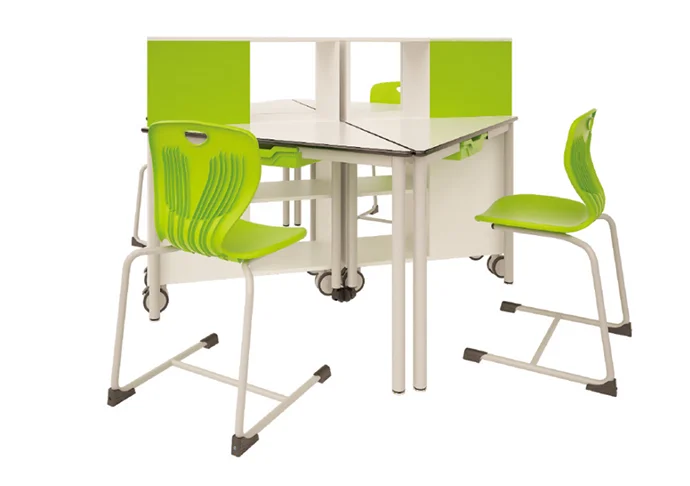Innovative Designs of Collaborative Classroom Desks for Every Classroom
多行文本内容元素
富文本内容绑定数据后可解析HTML语言内容
Release time:
Oct 15,2025
Summary:Innovative Designs of Collaborative Classroom Desks for Every Classroom
Table of Contents
Introduction to Collaborative Classroom Desks
The Importance of Collaborative Classroom Desks in Modern Education
Current Design Trends in Classroom Desks
Flexible Furnishing: Adapting to Diverse Learning Styles
Integrating Technology into Classroom Desk Designs
The Role of Ergonomics
Innovative Designs of Collaborative Classroom Desks for Every Classroom
Table of Contents
- Introduction to Collaborative Classroom Desks
- The Importance of Collaborative Classroom Desks in Modern Education
- Current Design Trends in Classroom Desks
- Flexible Furnishing: Adapting to Diverse Learning Styles
- Integrating Technology into Classroom Desk Designs
- The Role of Ergonomics in Classroom Desk Design
- Sustainable Materials for Environmentally Friendly Desks
- Future Trends in Collaborative Classroom Desk Designs
- Conclusion: The Future of Collaborative Classroom Desks
- Frequently Asked Questions
Introduction to Collaborative Classroom Desks
In the evolving landscape of education, **collaborative classroom desks** have emerged as vital tools for fostering interaction and teamwork among students. Unlike traditional desk setups, these innovative designs encourage collaboration, communication, and creativity, essential elements for preparing students for the demands of the 21st century. This article delves into the various innovative designs of collaborative classroom desks and how they can transform any learning environment.
The Importance of Collaborative Classroom Desks in Modern Education
The shift towards a **student-centered learning approach** has highlighted the need for furniture that supports collaboration. Collaborative classroom desks offer numerous benefits:
- **Facilitating Group Work**: Designed to accommodate multiple students, these desks enable group activities and discussions, fostering a sense of community within the classroom.
- **Encouraging Engagement**: When students are less confined by traditional seating arrangements, they are more likely to engage, participate, and contribute to discussions.
- **Enhancing Learning Experiences**: The flexibility of collaborative desks allows for various configurations, helping educators to tailor the classroom layout to suit different lesson plans and learning objectives.
Current Design Trends in Classroom Desks
Several innovative designs are emerging in the realm of collaborative classroom desks. These trends focus on functionality, aesthetics, and adaptability:
Modular Designs
Modular desks consist of separate units that can be easily reconfigured to suit different group sizes and activities. This adaptability enables educators to create dynamic learning environments in response to various educational needs.
Mobile Furniture
Desks on wheels provide a practical solution for changing classroom layouts quickly. This mobility allows teachers to optimize space and adapt to group activities with ease.
Integrated Technology Features
Modern classroom desks increasingly incorporate technology, such as built-in power outlets and charging stations, allowing students to use laptops and tablets seamlessly during collaborative sessions.
Flexible Furnishing: Adapting to Diverse Learning Styles
One of the most significant advantages of collaborative classroom desks is their ability to accommodate various learning styles. Flexible furnishing allows educators to create an inclusive environment that supports:
Kinesthetic Learners
For students who thrive on movement, standing desks or adjustable-height desks can be beneficial. These options promote active engagement and help maintain focus during lessons.
Visual Learners
Desks configured in a circular or U-shape foster eye contact and promote visual interaction, essential for visual learners who benefit from seeing and being seen by their peers.
Auditory Learners
In configurations that facilitate discussion, such as clustered desks, auditory learners can engage in conversations and listen effectively to their peers, enhancing their overall learning experience.
Integrating Technology into Classroom Desk Designs
Technology plays a crucial role in modern education, and desk designs are evolving to reflect this. Key features include:
Smart Desks
Some collaborative desks are equipped with smart technology that allows for interactive learning experiences. Incorporating touchscreens, these desks enable students to collaborate on digital projects directly from their workspaces.
Device Charging Stations
With the prevalence of laptops and tablets, many classroom desks now come with built-in charging ports. This feature ensures that devices remain powered throughout the day, facilitating uninterrupted learning.
Wireless Connectivity
Desks that support wireless connectivity allow students to connect their devices to the classroom's network seamlessly, promoting an integrated learning environment.
The Role of Ergonomics in Classroom Desk Design
Ergonomics is an essential consideration in designing collaborative classroom desks. Appropriate desk height, comfortable seating, and proper spacing are crucial for promoting student well-being and minimizing physical strain. Collaborative desks that offer adjustable features can accommodate varying heights and preferences, ensuring that every student can work comfortably.
Health Benefits
Proper ergonomic designs can lead to reduced fatigue, improved posture, and enhanced focus among students. This can directly influence their academic performance and overall satisfaction with the learning environment.
Sustainable Materials for Environmentally Friendly Desks
As educational institutions become more environmentally conscious, the demand for sustainable classroom furniture has increased. Innovative classroom desks are now constructed from eco-friendly materials, such as recycled wood and non-toxic finishes. These sustainable options not only contribute to a healthier environment but also teach students the importance of eco-consciousness.
Local Sourcing
Many manufacturers now prioritize local sourcing of materials to reduce carbon footprints associated with transportation. This practice supports local economies and promotes sustainability in design.
Future Trends in Collaborative Classroom Desk Designs
Looking ahead, several trends are likely to shape the future of collaborative classroom desks:
Augmented Reality (AR) Integration
As AR technology advances, we may see desks that incorporate AR features to enhance learning. This could enable interactive lessons and immersive educational experiences.
Customizable Designs
Future desks might offer even more customization options, allowing schools to design spaces that precisely meet their unique needs and preferences.
Focus on Well-being
There will likely be a growing emphasis on wellness in classroom designs. Desks that promote mindfulness, relaxation, and mental health will become increasingly popular as educators recognize the importance of overall student well-being.
Conclusion: The Future of Collaborative Classroom Desks
Innovative designs of collaborative classroom desks are revolutionizing how educational spaces are utilized. By fostering communication, engagement, and adaptability, these furniture pieces play a crucial role in shaping modern learning environments. As we move forward, the integration of technology, sustainability, and ergonomic considerations will continue to enhance classroom experiences for both students and educators alike.
Frequently Asked Questions
1. What are collaborative classroom desks?
Collaborative classroom desks are versatile furniture pieces designed to facilitate group work and interaction among students. They often come in various shapes and sizes, allowing for multiple configurations.
2. How do collaborative desks benefit students?
These desks enhance student engagement, support diverse learning styles, and promote teamwork, preparing students for a collaborative future.
3. What materials are used in modern classroom desks?
Many modern desks are made from sustainable materials, including recycled wood and non-toxic finishes, ensuring an eco-friendly design.
4. Can collaborative desks accommodate technology?
Yes, many collaborative desks are designed with built-in charging stations and smart technology features to support the use of laptops and tablets.
5. How do ergonomic designs impact student learning?
Ergonomic designs promote better posture and comfort, which can lead to reduced fatigue and improved focus, ultimately enhancing academic performance.
By focusing on innovative designs, functionality, and sustainability, collaborative classroom desks are poised to play a pivotal role in the future of education.


